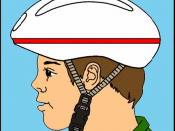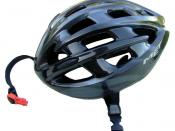In Australia, laws have already been passed mandating the use of helmets while riding a bicycle. But are these laws justified? There is voluminous research on helmets and helmet legislation, yet there is still much debate on how effective helmets are at preventing injuries, and how the legislation has affected communities.
It is widely accepted that bicycle helmets will in many cases prevent or reduce skull fractures and superficial head injuries. But it is less clear is how effective helmets are at preventing injuries to the brain, which is where controversy appears. Bicycle helmets are primarily designed to reduce the effect of linear forces, by providing a soft, crushing layer that reduces the linear acceleration to the brain during impact. Head impacts from bicycle crashes do not generally involve a direct square-on impact, most commonly there is an angled impact as the head hits the ground with forward momentum; or the windshield of a motor vehicle.
Tests are not carried out for these, however. Such an impact is likely to impart some degree of rotational force on the head and brain. The effect of helmets on rotational forces to the brain is not entirely clear. Rotational forces may be reduced by the same crushing effect of the helmet that reduces linear forces; but they may be increased due to the increased size and mass of the head with the added helmet. A blow that is not square on center, i.e. not linear, will rotate the head. It has not been ruled out that the added mass, size and surface texture of a helmet may make the rotational effect more severe.
The conventional method of testing a helmet is to place a 5kg weight inside, to drop it a fixed distance on various surfaces, and to measure the deceleration. If the...


